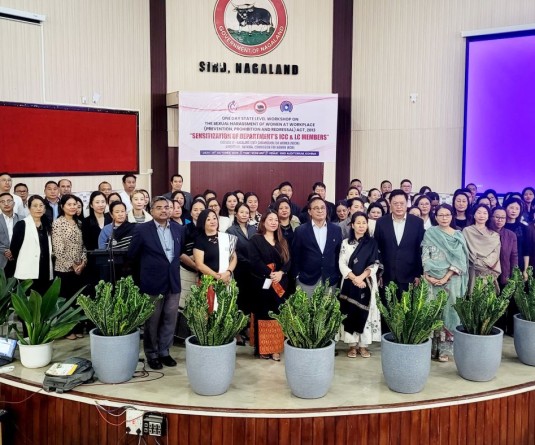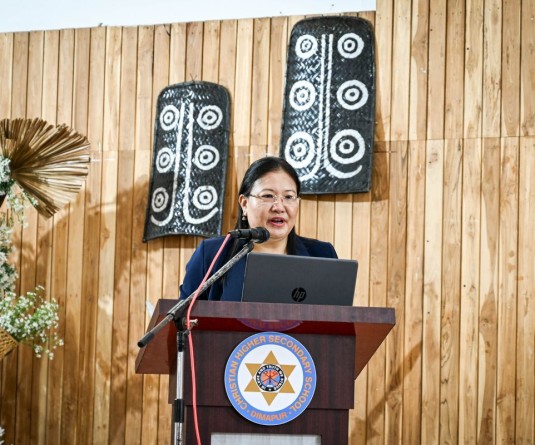
Incremental improvements made but still a long way to go, shows NITI Aayog report
Morung Express News
Dimapur | June 25
The second edition of the ‘Healthy States, Progressive India’ report brought out by the NITI Aayog today showed that while Nagaland state has made some incremental improvements in its public healthcare delivery, there is still a long way to go.
Nagaland registered the lowest Health Index Score among a set of 8 smaller states in the report which ranks states and union territories on their year-on-year incremental change in health outcomes, as well as, their overall performance. Among the larger states, Kerala came top an overall score of 74.01, while Uttar Pradesh was the least performing state with an overall score of 28.61
The round II report focuses on measuring and highlighting the overall performance and incremental improvement over a two year period (2016-17 and 2017-18) in the States and UTs.
In terms of overall performance, among smaller states, the scores varied between 38.51 in Nagaland and 74.97 in Mizoram. Nagaland’s score of 38.51 in the year 2017-18 resulted from an incremental increase 1.13 points from the base year of 2015-16, with the report stating that “there is large scope for improvement” in states with scores below 50.
In terms of incremental change in the score, Nagaland positive incremental change of 1.13 points was higher than the states of Meghalaya, Goa, Sikkim and Arunachal Pradesh. However it was still the least improved among the smaller states. In this category, the state ranked fourth.
Based on the Health Index score range for Reference Year (2017-18), Sikkim, Tripura, Arunachal Pradesh and Nagaland are categorized as Aspirants, and have substantial scope for improvement.
The report further tagged Manipur, Meghalaya and Goa as achievers as they exhibited better performance, but still have significant room for improvement. The State of Mizoram has been categorized as Front-runner with the highest overall performance among the Smaller States. Meanwhile, the states of Tripura and Manipur are categorized as ‘Moderately Improved’, Mizoram and Nagaland as ‘Least Improved’ whereas Meghalaya, Goa, Sikkim and Arunachal Pradesh are categorized as ‘Not Improved’.
Health Indicators
In the domain of Health Outcomes, only three States (Manipur, Goa, and Nagaland) improved their performance from Base Year to Reference Year, and the performance of the remaining smaller states suffered large decline in Health Outcomes Index score.
In the key inputs/processes domain, Nagaland was among five of the smaller states alongwith Goa, Sikkim, Arunachal Pradesh and Manipur which registered a decline in Index scores.
Arunachal Pradesh and Nagaland registered a decrease of 11 and 9 points respectively, whereas Mizoram and Tripura registered about 13 and 15 percentage point increase, respectively. The maximum score in this domain was 57.6 for Mizoram and the minimum score was 25.3 for Manipur. This, according to the report, suggests that all states need to put tremendous efforts to improve their performance.
Among the smaller States, Arunachal Pradesh and Tripura had improved on twelve indicators, whereas Nagaland improved on five indicators only. All other smaller states (except Arunachal Pradesh and Tripura) made improvements in less than 46 percent of the indicators.
One indicator in which Nagaland did well among the smaller states was with regard to low birth weight among new borns. Nagaland recorded the least such incidences at 4.1 percent while Goa topped at 15.6 percent with the most cases.
In terms of immunization, Odisha, Nagaland, and Daman and Diu were the States and UTs with the lowest percentage of full immunization coverage (52.8-59.8 percent). Nagaland scored 63.9 percent in this category, which was an improvement from 58.2 percent in the base year of 2015-16.
With regard to institutional deliveries, the report found that only about half of total deliveries in Uttar Pradesh, Nagaland, and Daman and Diu were conducted in health facilities. The precent level for Nagaland in this category rose from 54.3% in 2015-16 to 58.1% in 2017-18.
In terms of total notification rate of tuberculosis per one lakh population, Nagaland’s rate declined from 148 to 139.
Treatment success rate of new microbiologically confirmed tuberculosis cases also rose in Nagaland from 67.6 percent to 71.9 percent.
Personnel and administrative structures
The report found that, the average occupancy of Principal Secretary, Mission Director (NHM), and Director (Health Services) or equivalent positions in a period of three years was lowest in Nagaland at 5.8 months and highest in West Bengal at 28 months.
The readings with regard to manpower at Primary and Community Health Centres also made good reading.
The average occupancy of a District Chief Medical Officer (CMO) or equivalent post (heading District Health Services full-time) (in months) in last three years
Vacancy of Staff Nurse and specialists were recorded at 0 percent. But note here, that there was no base year data to judge this from. Meanwhile the vacancy of Medical Officers at PHCs in Nagaland was at 27.4 percent; again with no base year reference.






